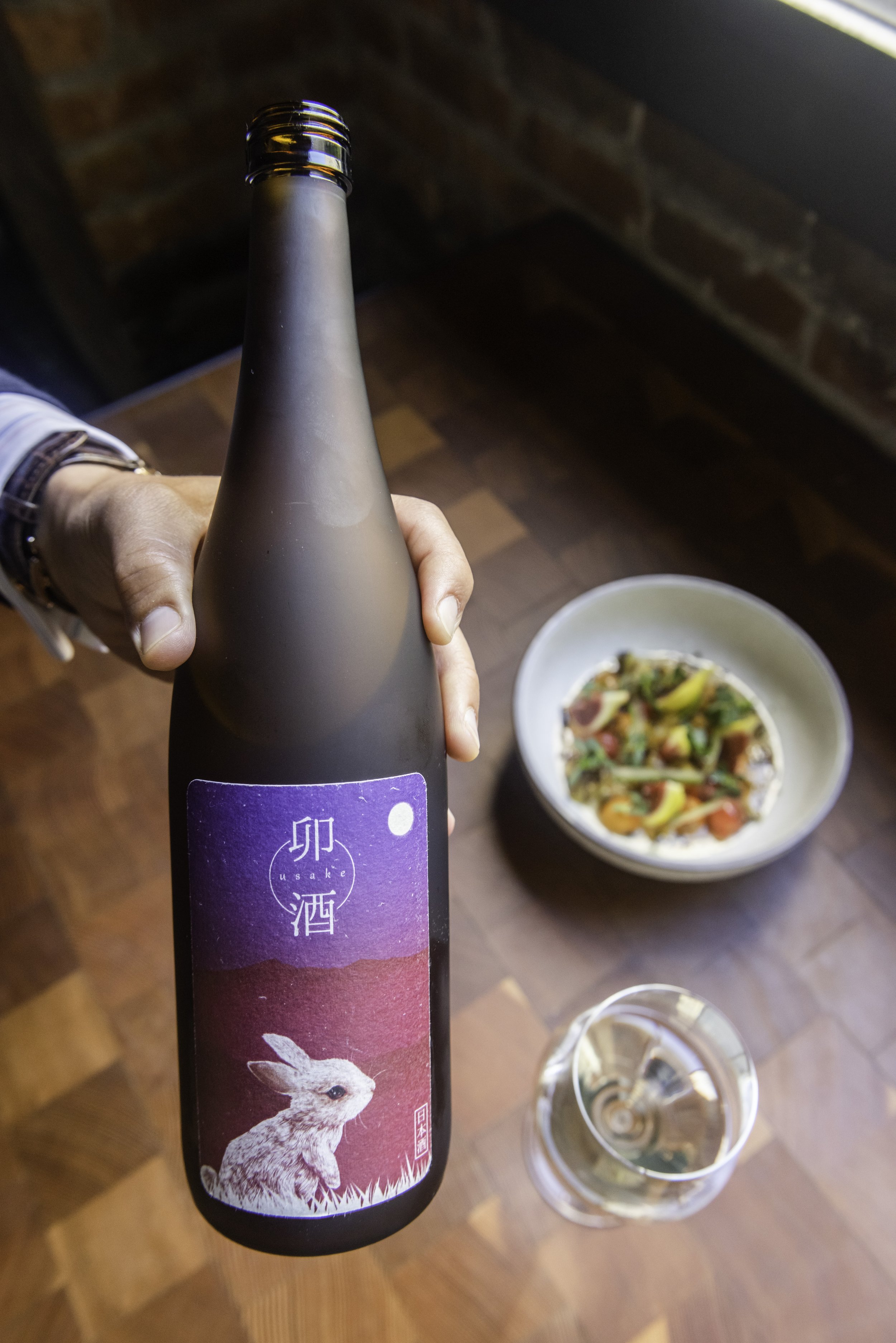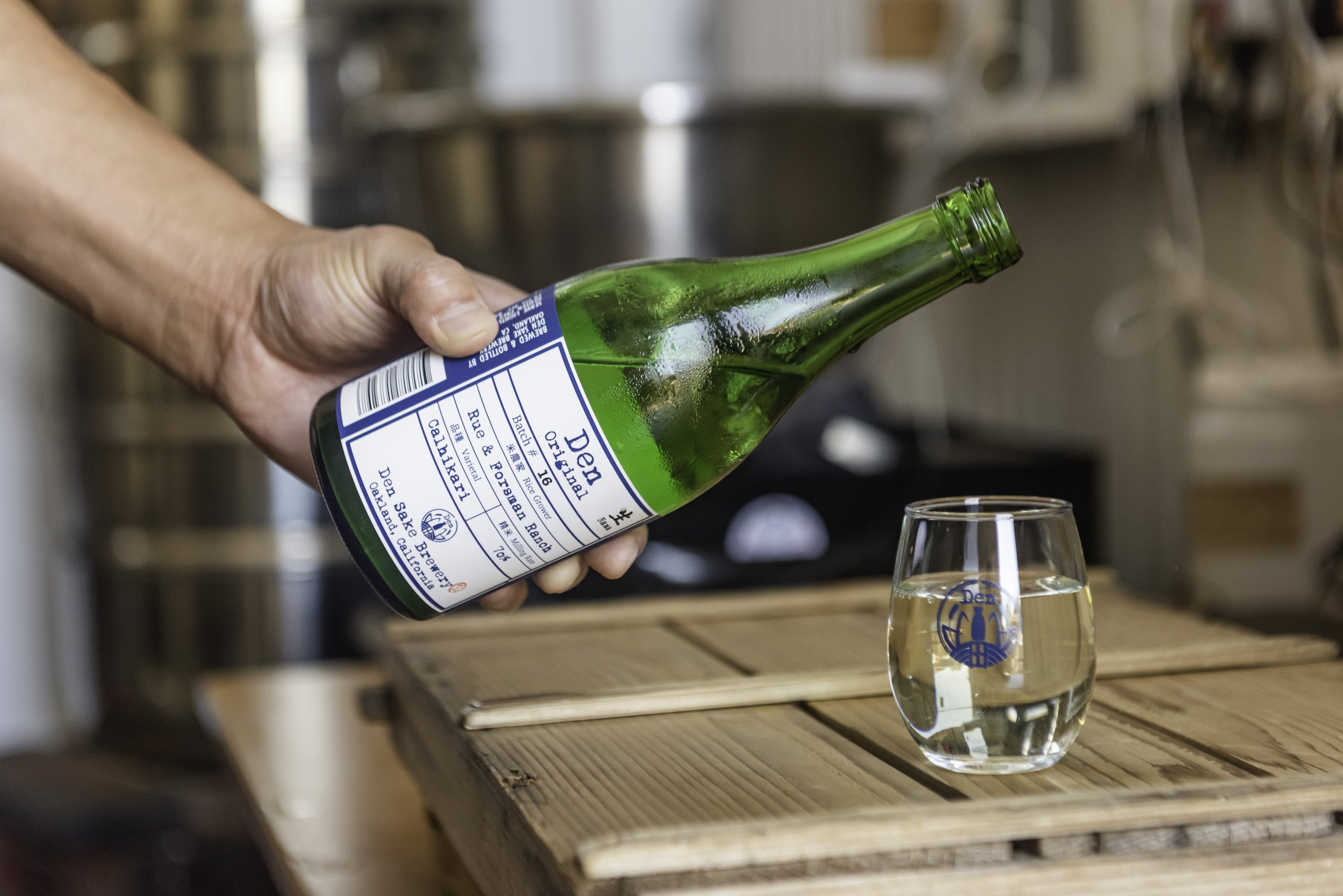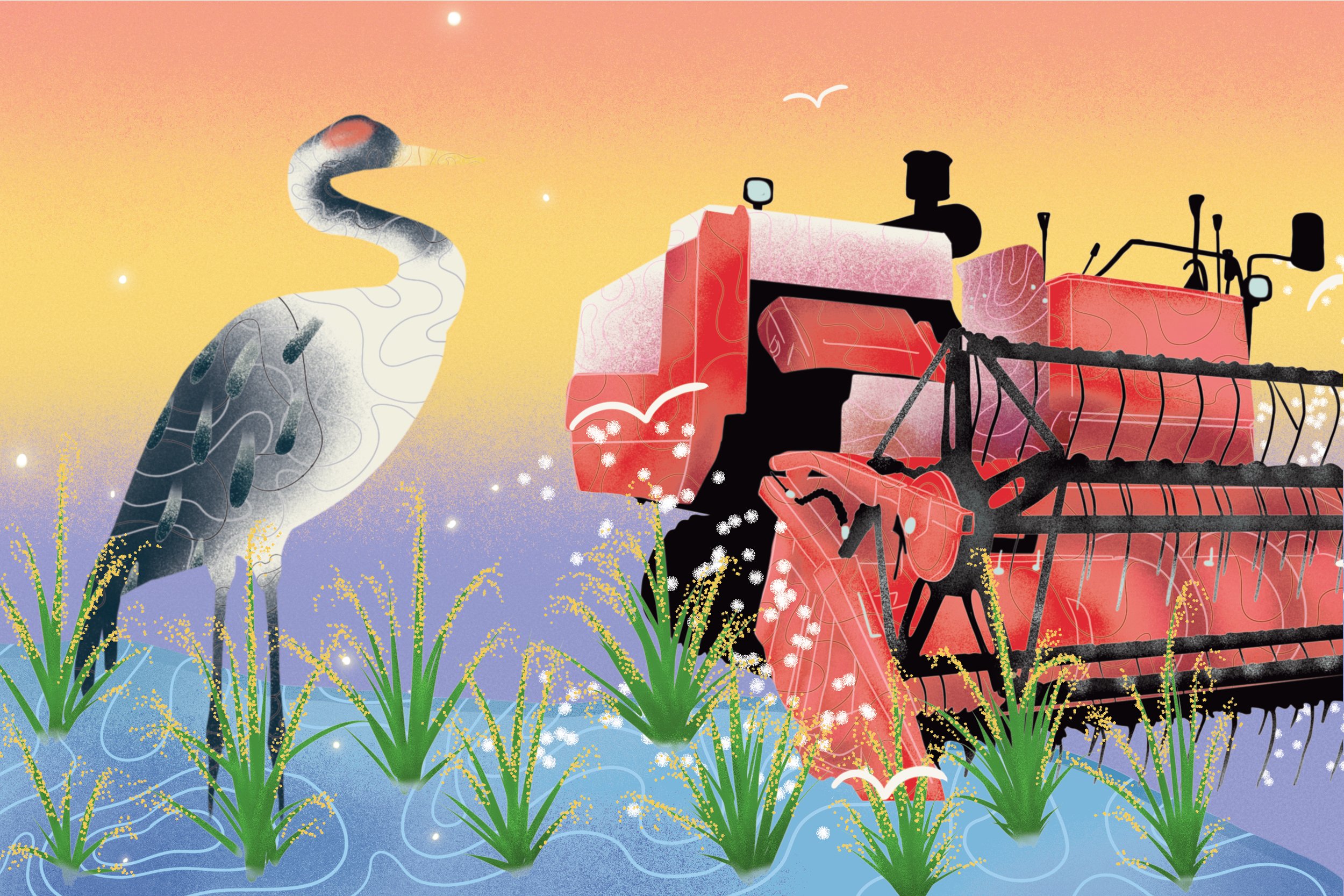Reaching for Sake
Bay Area industry professionals are changing the perception of pairing with Japan’s national beverage.
photos: Will Blunt
If every great cocktail bar is expected to have a good mezcal, gin, or cognac, why can’t every beverage program have sake? Today, there are an abundance of nuanced, high-quality sakes at restaurants and bars around the country, but in San Francisco and Oakland, the brew seems especially prominent. StarChefs talked with three Bay Area sommeliers and one sake brewer who are bringing sake to the forefront of the restaurant scene.
José Carlos Delgado, Mourad
The Dish: Yume No Kori, Daitengu Sake Brewery, Usake, Hiyaoroshi Junmai Ginjo, Fukushima, Japan
The Pairing: Tomatoes, Panache Figs, Serpin Cucumber, Horseradish, Urfa Biber, Puffed Rice
“This past year I’ve gotten a lot of inquiries about sakes,” says sommelier José Carlos Delgado. “It’s fun to get people to try it, especially in pairings.” Rather than reaching for a white wine to balance the acid in the dish, Delgado chose a light acid, high-umami sake from Daitengu Sake Brewery in Fukushima. While sakes usually skew lower in acid, the Usake—lagered for a year—balances acid with savory. “The type of acidity you get with not-quite-ripe bananas, it has that character,” says Delgado.
The result: the sake tastes sweeter while the tomato flavors pop. “Tomatoes, even in their raw state but especially when slightly macerated or pickled a bit, are one of those fruits that explode with natural saltiness, natural umami,” he says. “These styles of sake make the mouth salivate even more.”
Rachel Coe, Atelier Crenn
The Dish: Yamada Nishiki/Koshi Tanrei, Kaetsu Brewery, Kanbara Ancient Treasure, Yamahai Junmai Genshu Koshu, Niigata, Japan
The Pairing: Caramelized Onion-Burnt Bread Gel, Cauliflower Ice Cream, Caramelized Cheese Fat, Escargot Roe
“When I came to Atelier Crenn, there was some sake in the cellar, but none listed on the wine list,” says Coe. “Recently I got back into tasting it, learning more about it, and realizing there's a huge spectrum of styles that are so food friendly.” Sake fits right in with chef Dominique Crenn’s pescatarian menu, which draws inspiration from her travels around the world, including to Japan.
This dish, a re-creation of French onion soup, features many components working together that could make it difficult to pair. Coe wanted something nutty and savory, eventually landing on a 12-year aged sake, deeply caramel in color, from Kaetsu Brewery in Niigata. “I was fascinated by this toffee, nutty flavor,” she says. “It had a touch of sweetness, but also a smoky umami mushroom character.”
Jenny Eagleton, DAYTRIP
The Dish: Uehara Shuzo, Furosen Usunigori, Junmai Ginjo, Yamahai Muroka Nama, Shiga, Japan
The Pairing: King Salmon Crudo, Plum, Dill Oil, Armenian Cucumber, Anise Hyssop Flowers
“With sake it’s been really fun to say, ‘let’s try something that's probably unlike anything you've ever had,’” says Eagleton. Fermentation lies at the core of DAYTRIP’s identity, with koji playing an extensive role throughout the menu. “Exploring more types of fermentation across beverages felt, in terms of the mission of the restaurant, a really obvious choice.” Eagleton chose Uehara Shuzo’s Furosen Usunigori. “It’s kind of conspicuously ricey and a little nutty, but it has noticeable acid,” she says. “That acidity is really beautiful with the fattiness of the salmon. The almondy, nutty note and the anise hyssop, cucumber, and dill talk to one another in a pretty way.”
Yoshihiro Sako, Den Sake
After spending 13 years in the Bay Area sake industry, Yoshihiro Sako founded Den Sake in 2017, Oakland’s first sake brewery. “Compared to textbook-style sake, ours are a little different,” says Sako. He pairs traditional techniques with local products to make three sakes per year—Den Original, Den Red, and Den Blanc—each meant to shine with California’s cuisine. “Food here is much more fatty, more protein-rich, with heavier sauces than traditional Japanese dishes,” says Sako. “So I needed acidity to cut through it.”
He bumps up the acid in a few ways: tweaking the fermentation temperature and using white koji, which generates more citric acid than the koji typically used to make sake. The white koji also creates a safe, acidic environment for the shubo, or yeast starter, to grow. Most brewers would add lactic acid, but, says Sako, “I try to be as natural as I can.”
Each of Sako’s three brews remain true to their core character, while changing in subtle ways. “I love to trust my gut feeling sometimes, rather than just numbers,” he says. “I kind of like to improvise every time. I want to use a slightly different recipe, different temperature range, even for koji making, so that has an effect on the final product.”
Sako’s sixth batch, released a few years ago, landed Den Sake on the menu at Quince. “I really announced that this batch has higher acidity,” he says. That helped his sakes break through to sommeliers and beverage directors at non-Asian restaurants. “I think we are more recognized as a sake that can appeal to wine drinkers,” Sako adds.
To reach a wider audience, Sako puts the single-origin rice varieties from the Sacramento Valley on the label. This gives transparency about quality while highlighting the local nature of the drink. Sako thinks it also makes it easier for a sommelier to use the language of wine to describe his sake to customers. "I’m not just trying to make good sake, I'm trying to make it with intention."








